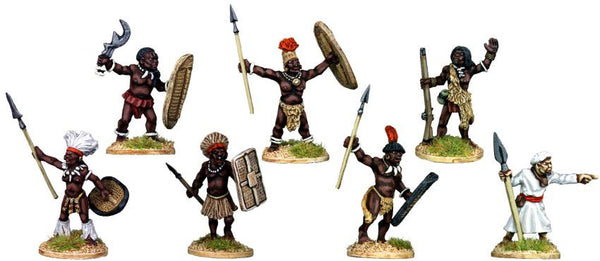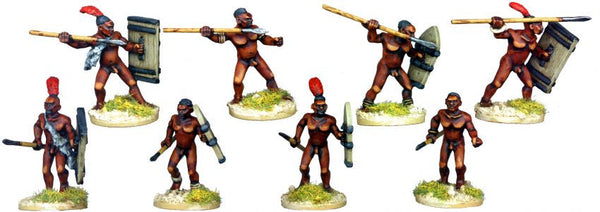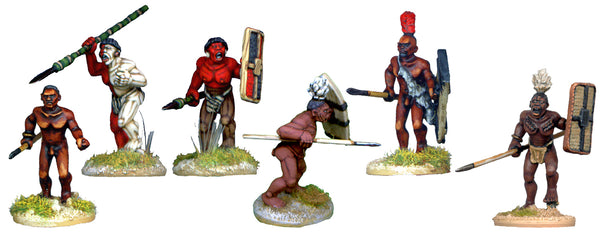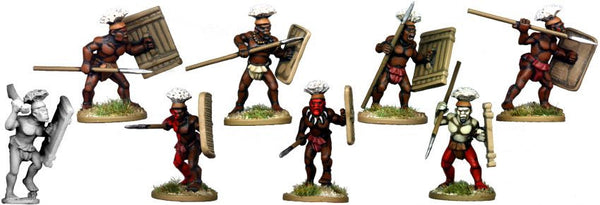Darkest Africa: African Tribal Warriors
With their variety of hairstyles, headgear and separate shields these warriors have endless uses from armies of fifteenth century Africa and the first clashes with the Portuguese to Twentieth Century adventure. They are perfect general purpose African warriors with plenty of poses and dozens of different heads to let you build large unique units of irregular troops.
Warriors with hide shields and the archers are perfect for the pagan tribes of East or Sudanic Africa. They could be pagan warriors of the savanna fighting for or against the mounted knights of the great Islamic city states. They could fight British constabulary, French Tirailleurs or Sudanese slavers. Equally spearmen with other shields and the archers can make up the armies not just of the Congo, but of forest and jungle peoples right across Central Africa.
We have a large number of customers fighting battles and skirmishes in historical, Victorian adventure, Steampunk or roleplay settings. using our Victorian Adventurers from the Darkest Africa range alongside the many hundreds of miniatures from our various African, Asian, Oriental and Victorian Historical ranges ( lots of appropriate models in the Old West ranges too ).
Our Packs of African warriors are supplied WITH SHIELDS but without cast spears or weapons. We expect that most of you will want to use our already flattened and shaped wire spears that we send out free with all the models that need them: the problem with cast spears is that they are often just not durable enough.
Skin - from light to very dark brown, fairly uniform within a particular tribe
Loincloths - animal skins, bark cloth (pale red-brown) and later imported cloth.
Hair and Headgear - huge variety of hairstyles, which were often the distinguishing feature of a tribe. Feathers could be fixed in hair - ostrich feathers (long white and short black) in East Africa, and parrot feathers (long crimson and short grey) in the Congo basin. Feathers could also be attached to animal skin or basketwork caps. Basketwork caps could be woven with geometric patterns in red or black against the natural raffia.
Warpaint - not always used, but when it was red and white were the usual colours. Patterns usually involved painting parts of the body in solid colours (eg white arms and legs or red upper body) or stripes. Sometimes the entire body could be painted, half red and half white. A tribe might use a common style, but would not be painted absolutely uniformly.
Shields - in East Africa, when used, were round or oval and made of hide. They were often unpainted, although at least one tribe painted theirs half red and half black. Any combination of red, white and black is possible. In the damper Congo, where hide was unavailable or would rot too fast, shields were made of basketwork or light wood. Both types were commonly painted black, either plain or with geometric patterns left in the natural cane colour. Shields were held by a central hand-grip.
















